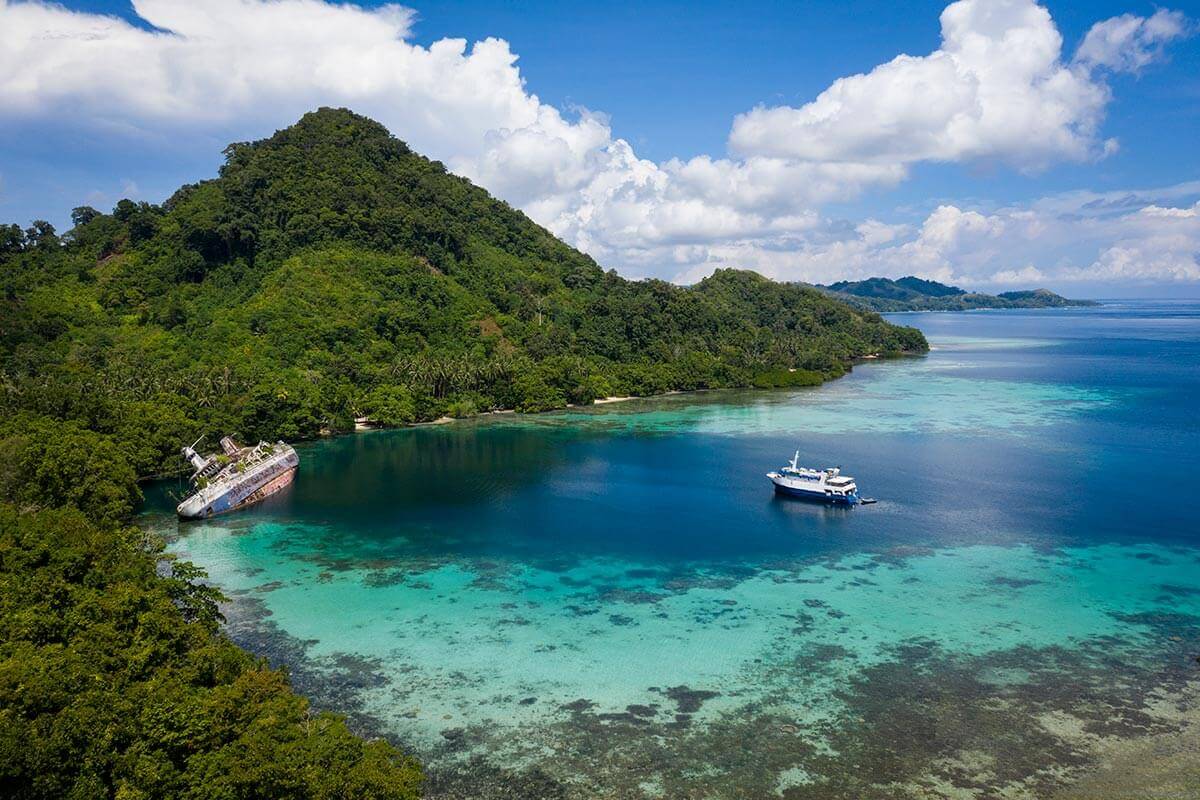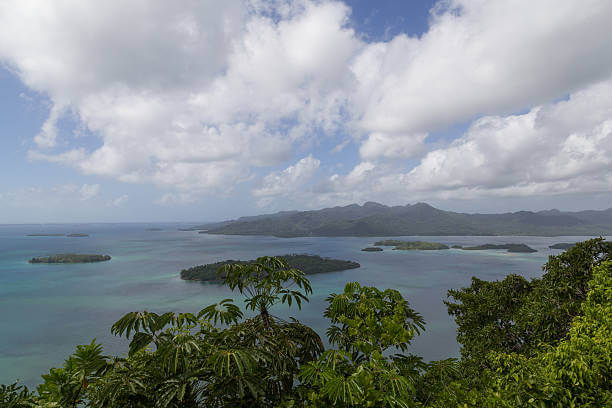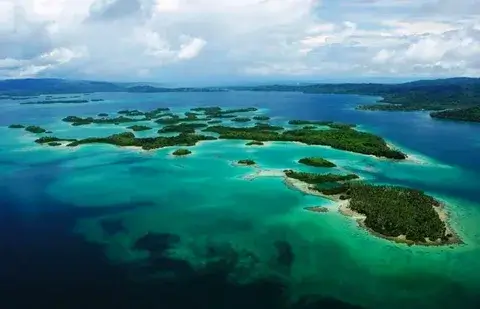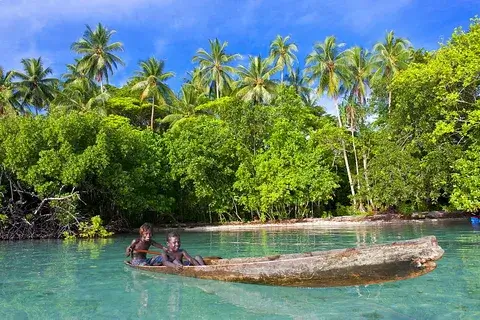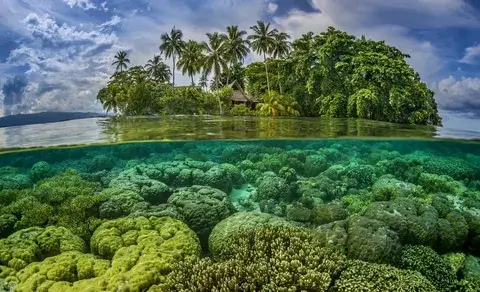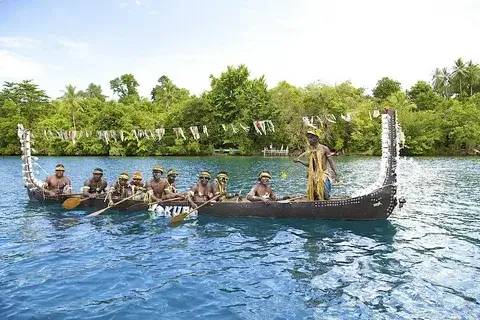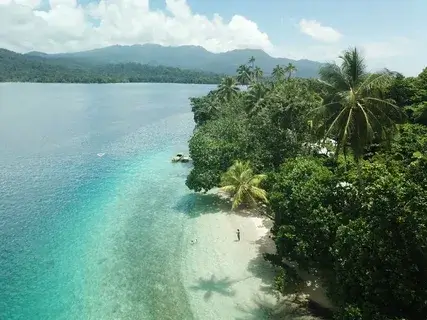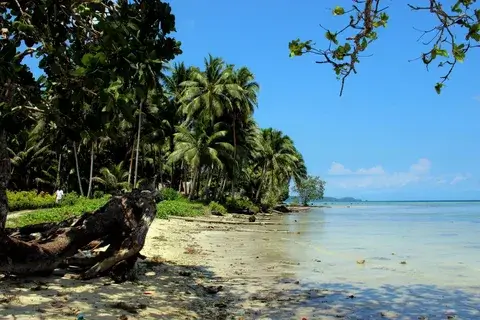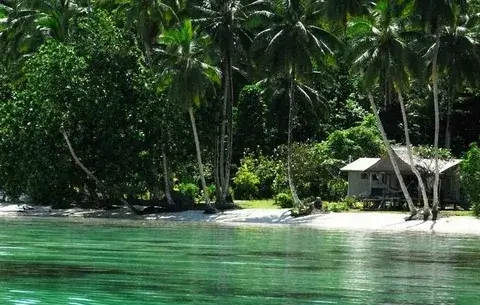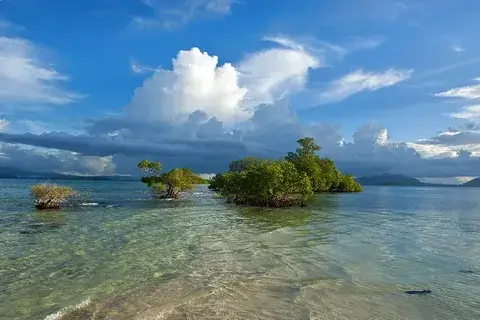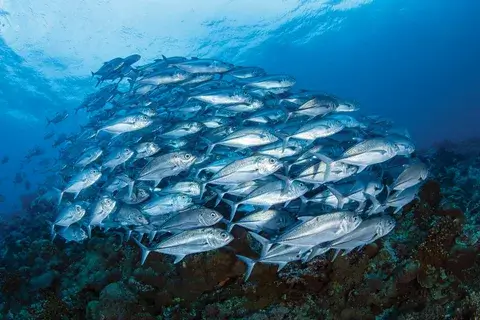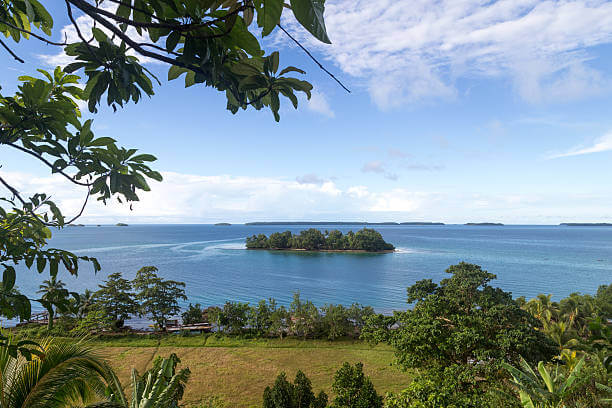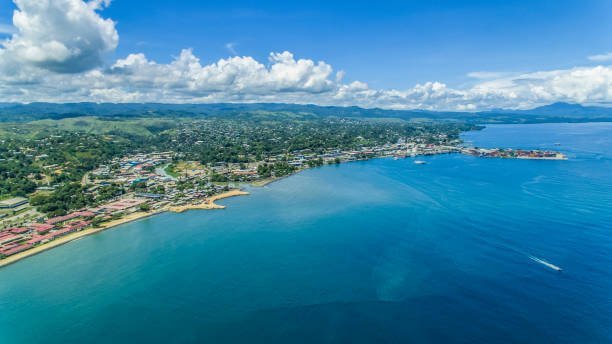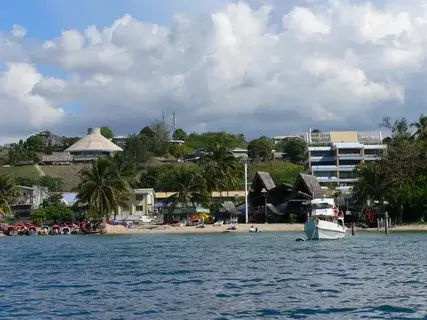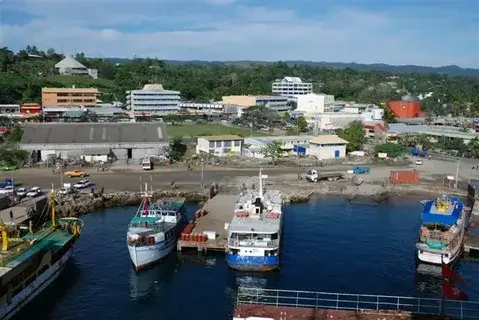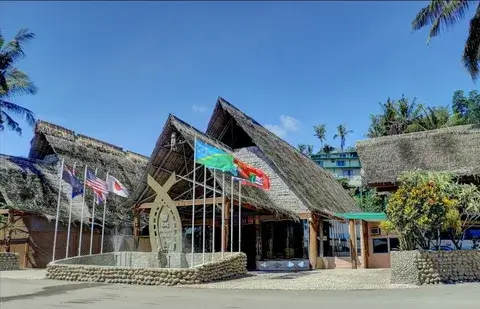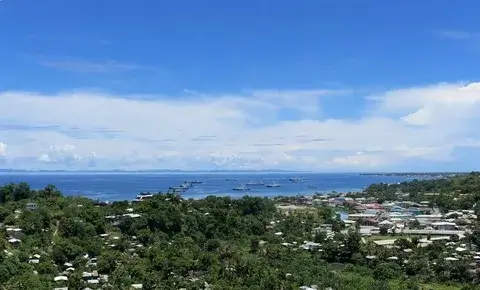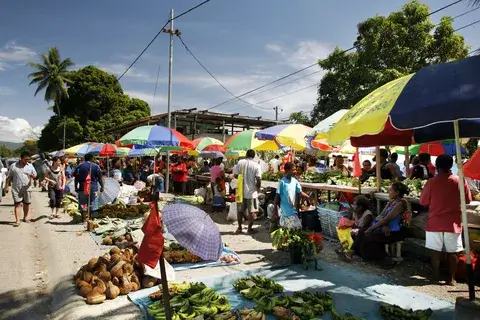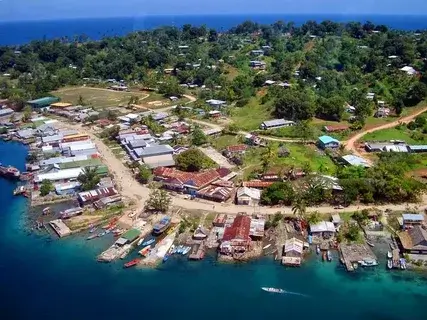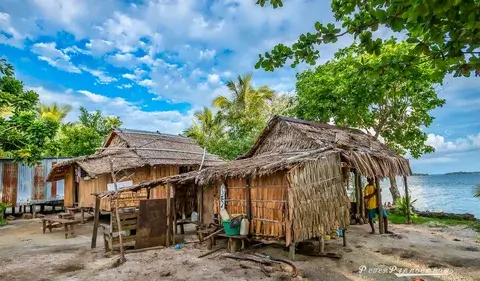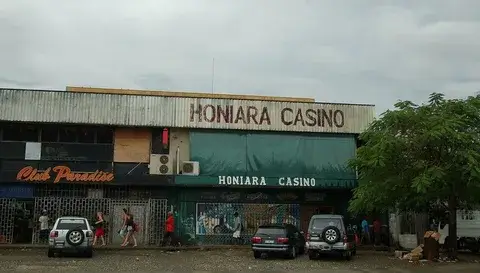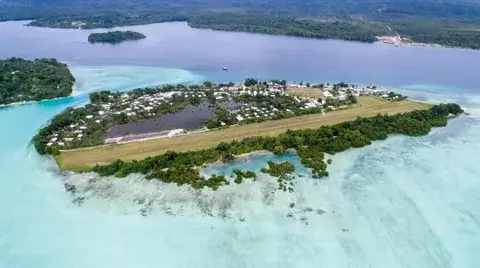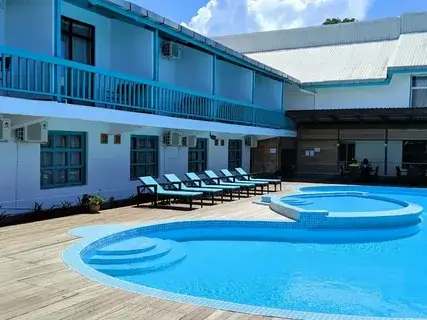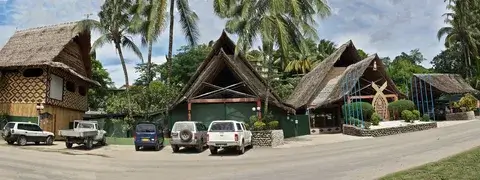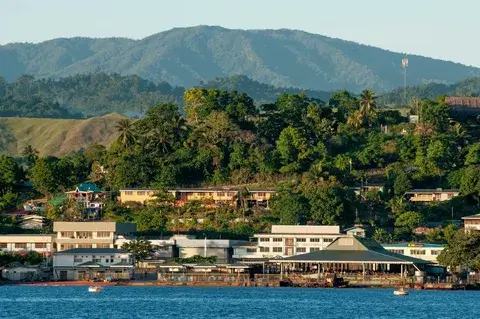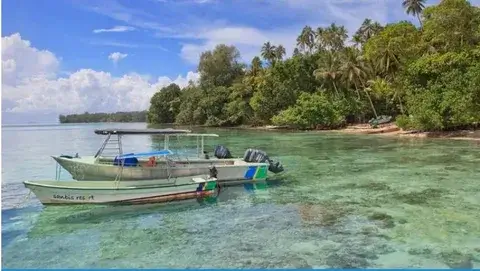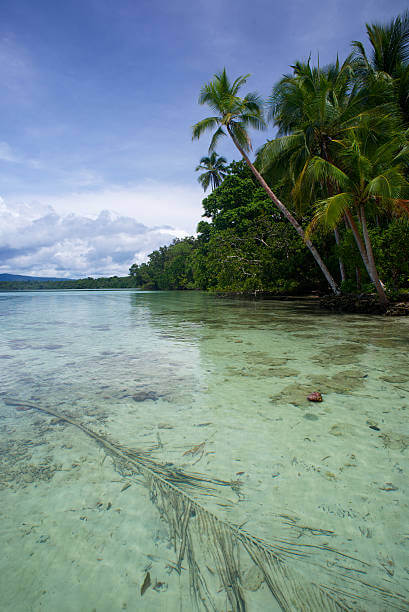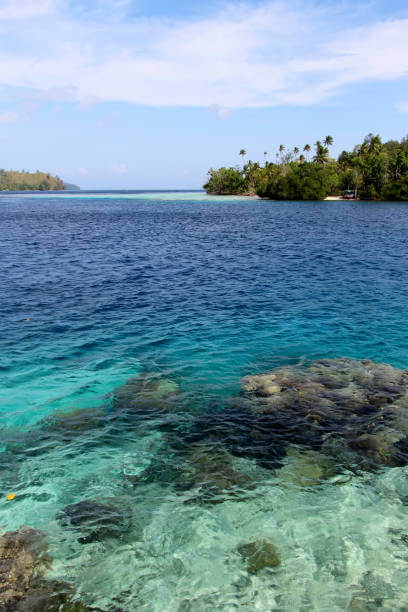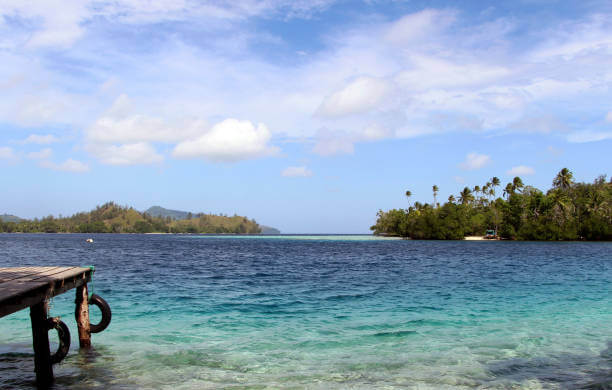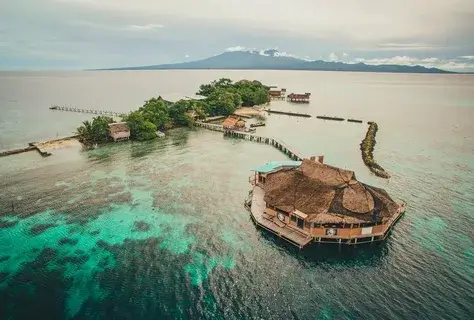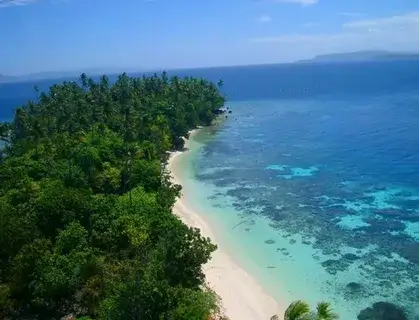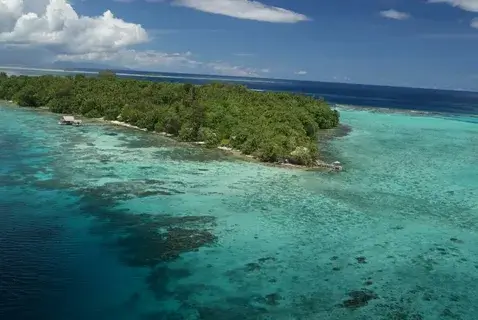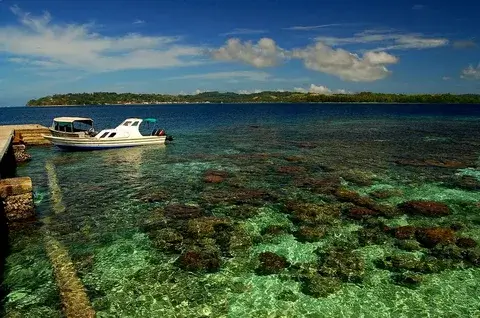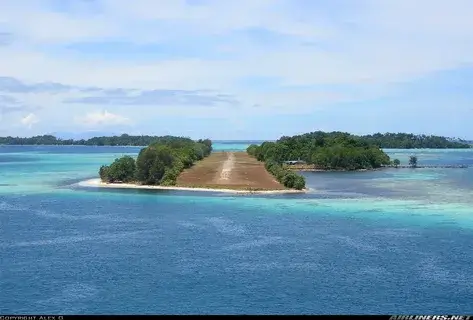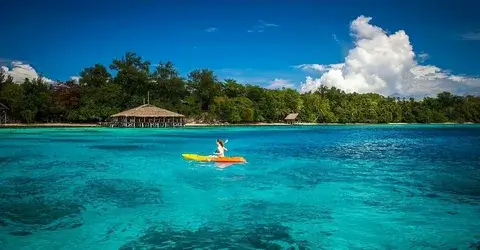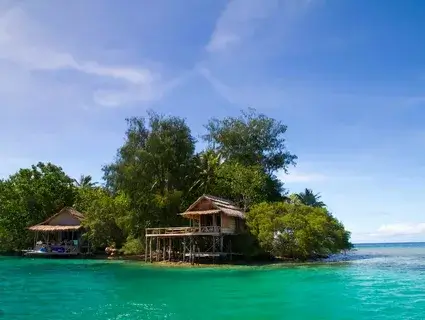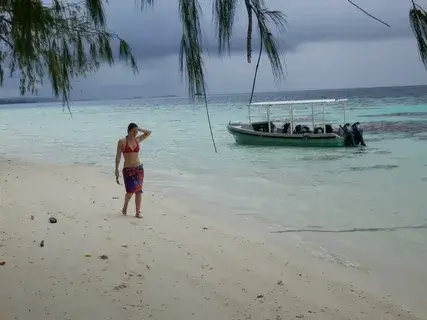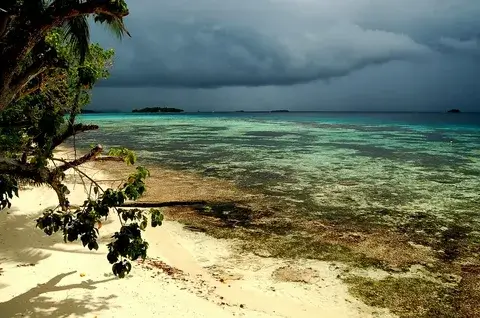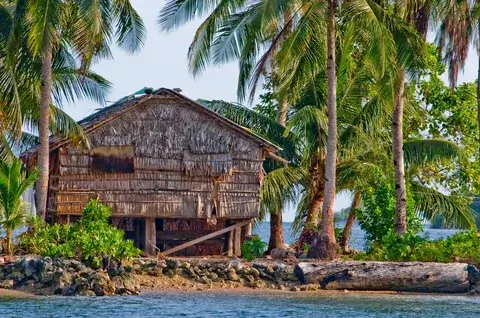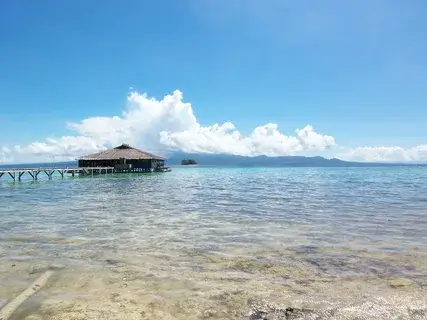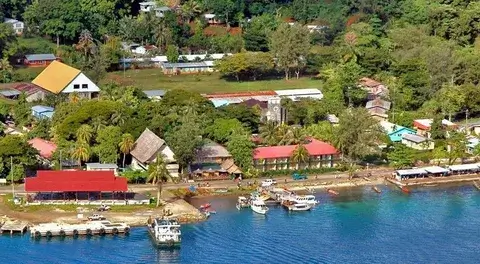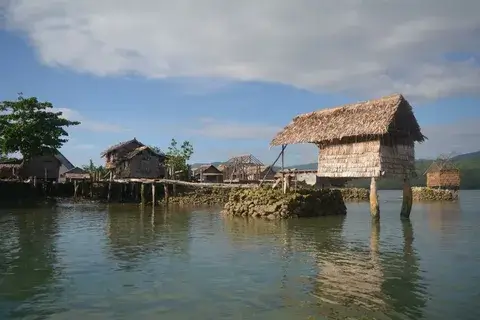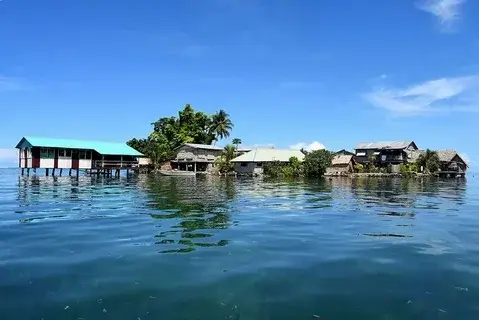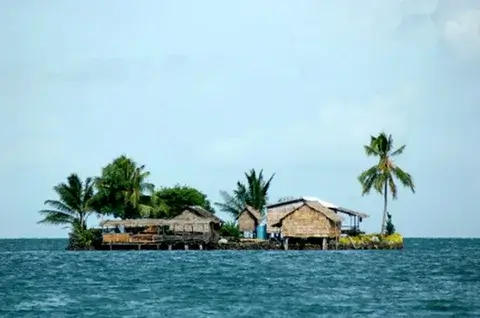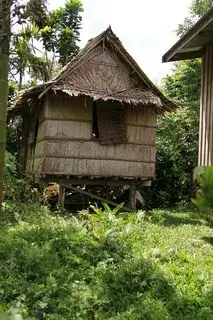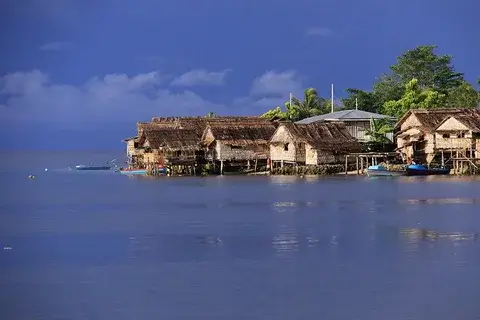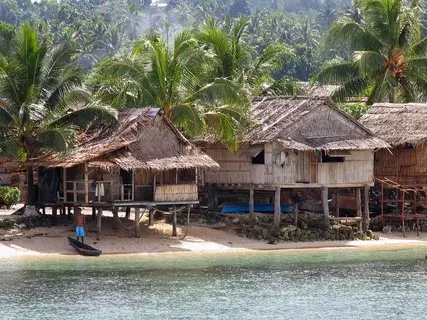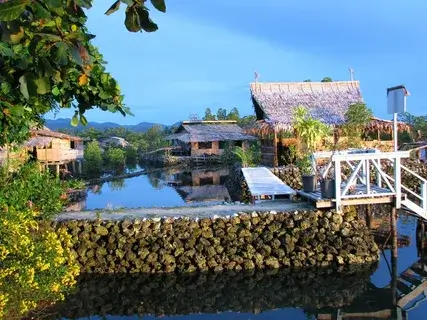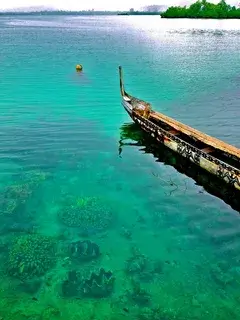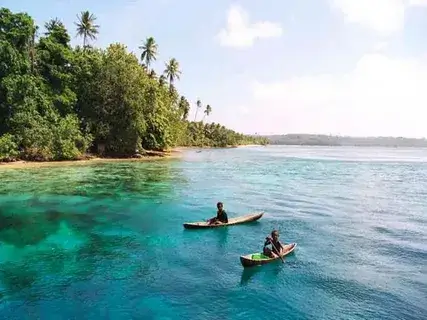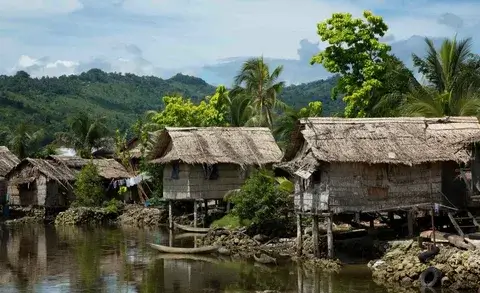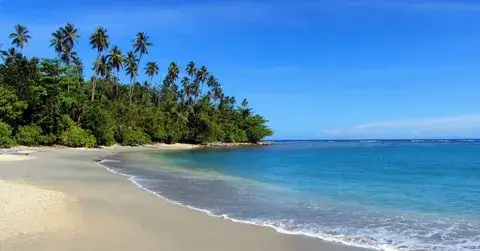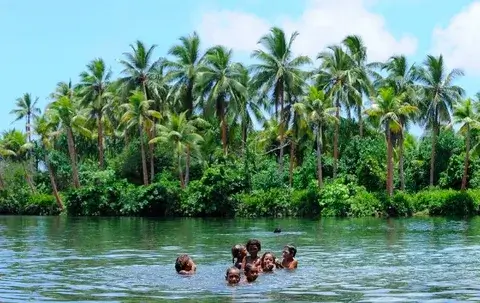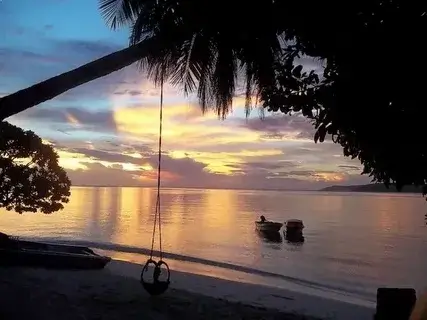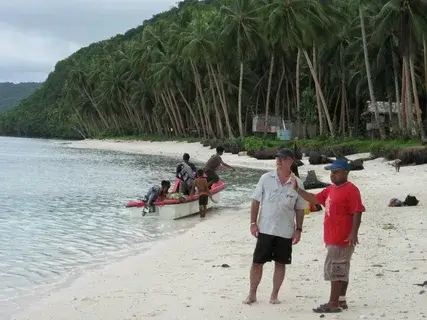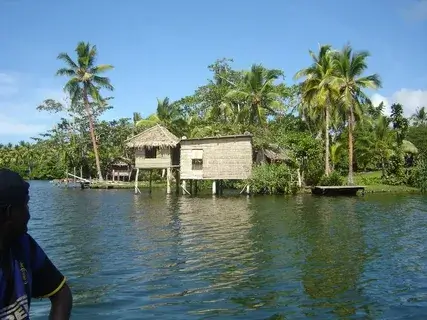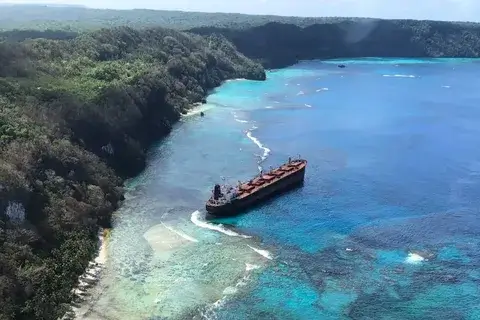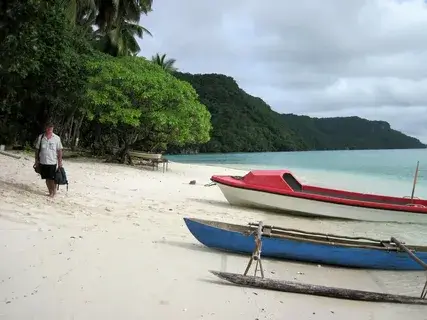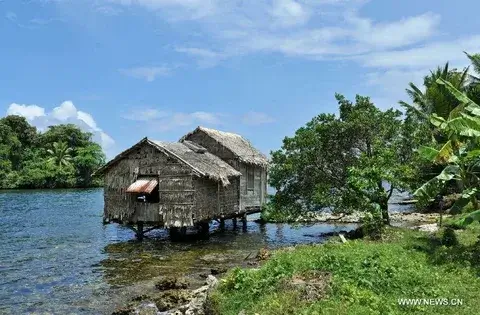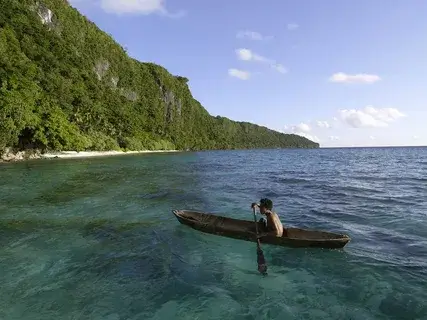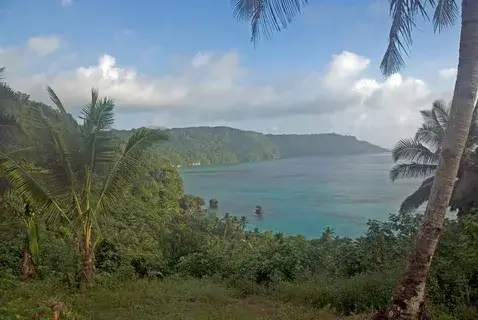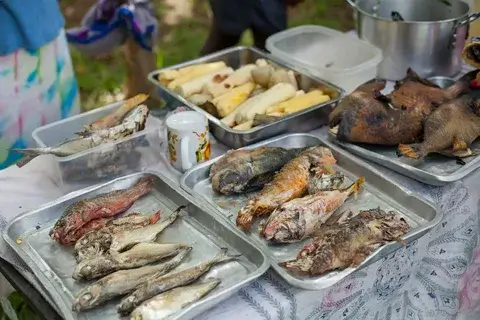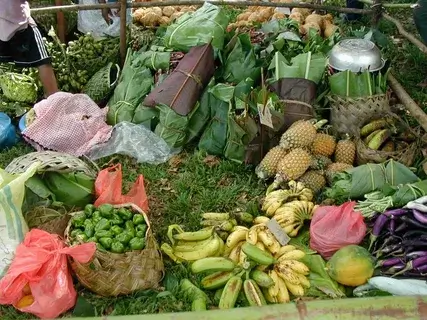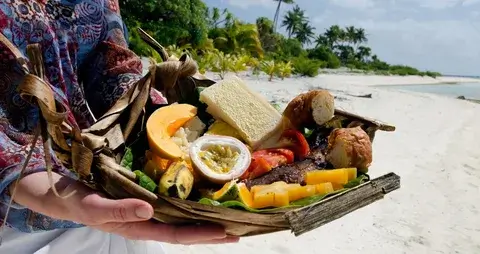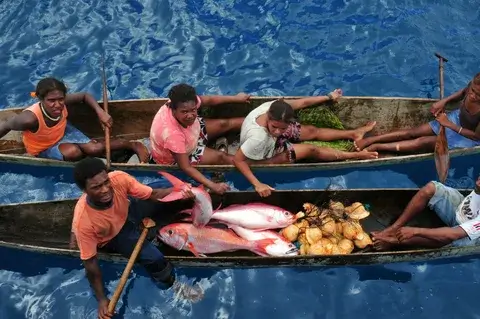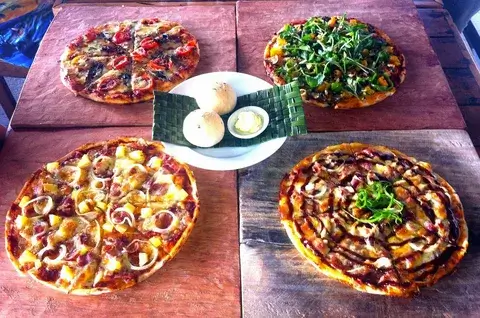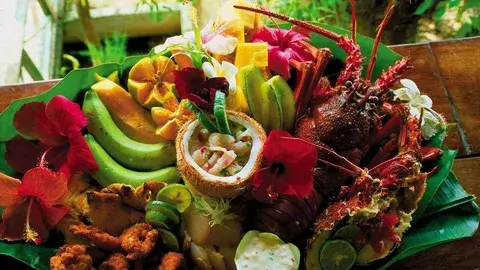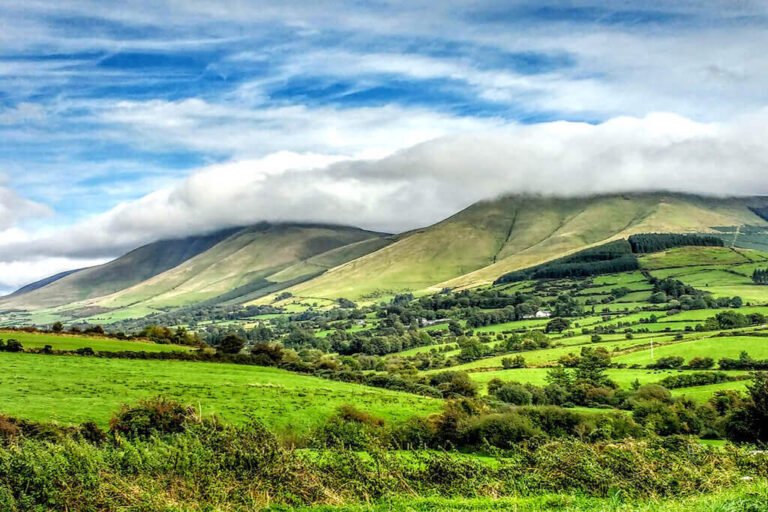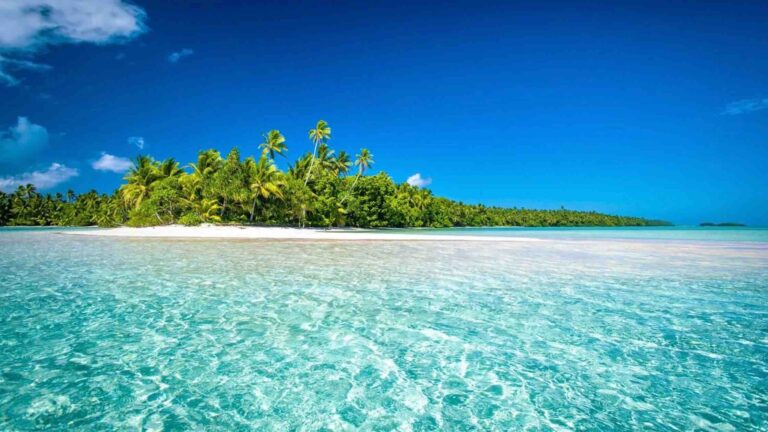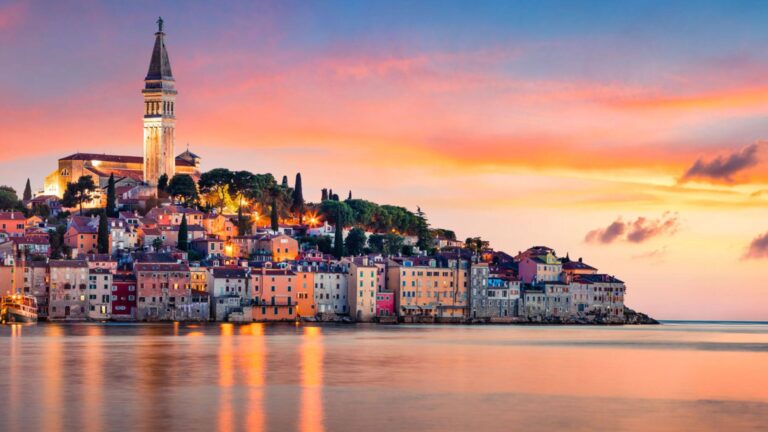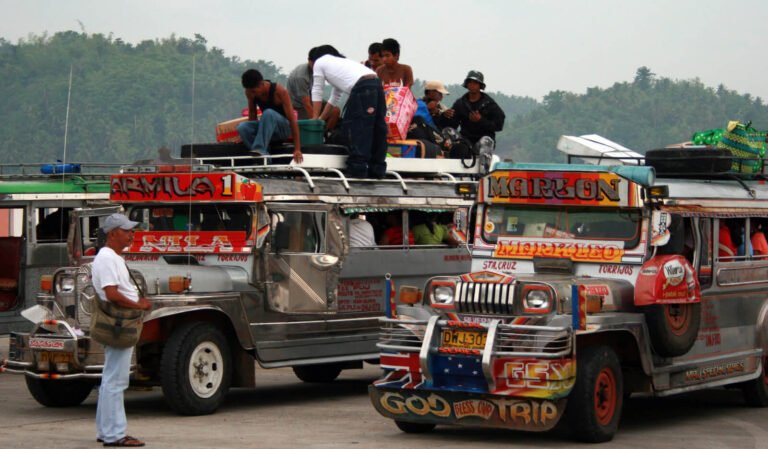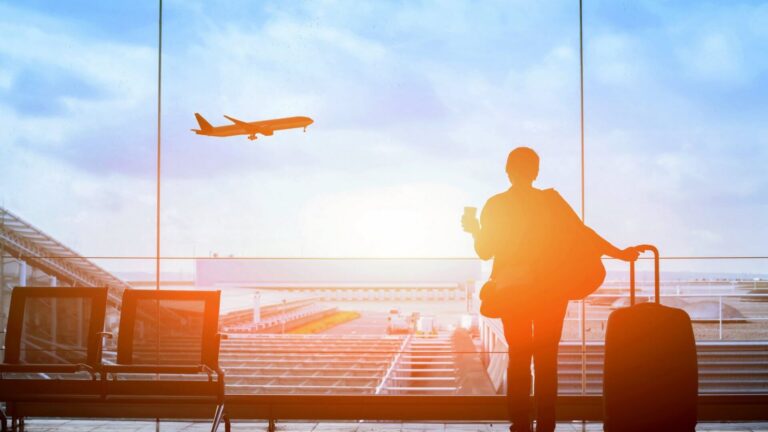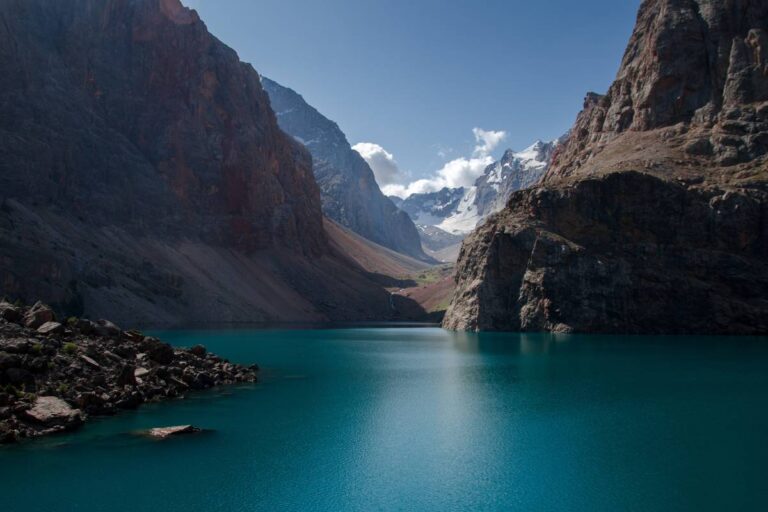Our Top 5 Best Places to Visit in Solomon Islands
Hidden Paradise: Must-Visit Places in the Solomon Islands

The 5 best places to visit in Solomon Islands: My journey through the Solomon Islands was a revelation of unspoiled beauty, rich culture, and unforgettable experiences. This South Pacific archipelago holds treasures that few have discovered. Join me as I recount the five best places I visited, along with unique personal experiences and hidden gems that made my trip truly remarkable.
Map of Solomon Islands

Map Showing Solomon Islands Location in the Pacific Ocean
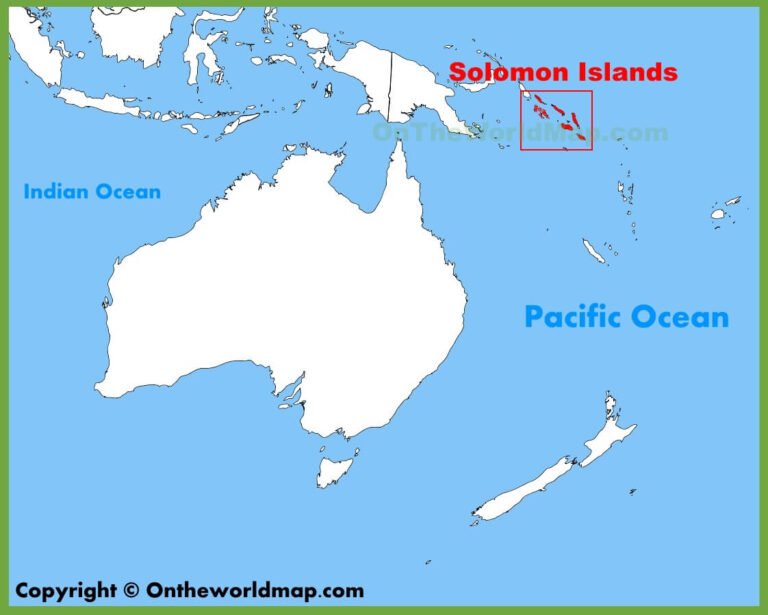
Countries Bordering Solomon Islands
Solomon Islands is located in Oceania in the western South Pacific Ocean and is mainly mountainous and covered in forests, although it has some extensive plains. Solomon Islands’ nearest neighbours are Vanuatu to the south-east and Papua New Guinea to the west. Australia lies to the southwest, New Caledonia to the southeast, Fiji, Wallis and Futuna and Tuvalu to the east, Nauru and the Federated States of Micronesia (FSM) to the north.
Honiara, on the north coast of Guadalcanal Island, is Solomon Islands’ capital and largest city. The population of the Solomon Islands in 2023 is estimated around 745,000 people.
- Vanuatu
- Papua New Guinea
- New Caledonia
- Fiji
- Wallis and Futuna
- Tuvalu
- Nauru
- Australia
- Federated States of Micronesia
- Oceania
- Pacific Ocean
Our Top 5 Best Places to Visit in Solomon Islands
1. Marovo Lagoon – A Hidden Gem of Underwater Paradise
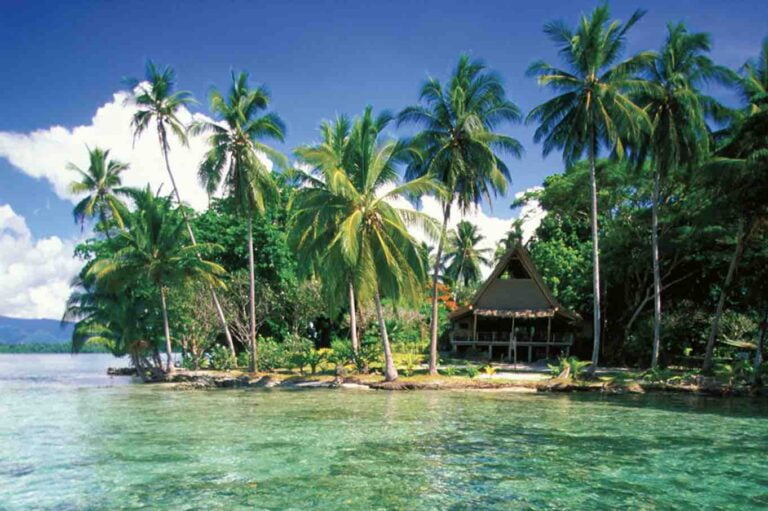
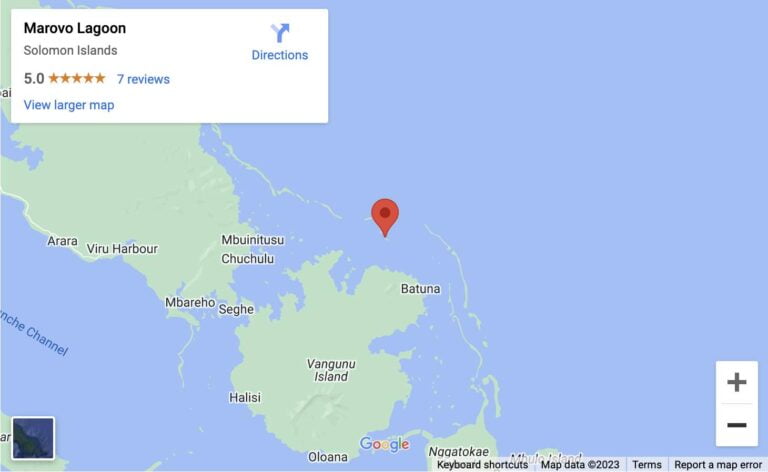
My first stop was Marovo Lagoon, a pristine underwater wonderland in the Western Province. After a hearty breakfast of coconut pancakes at my homestay on Gatokae Island, I embarked on a snorkeling adventure that felt like a journey to another world. Crystal-clear waters unveiled vibrant coral gardens, where I swam among tropical fish, graceful rays, and curious sea turtles.
For sundowners, I sipped fresh coconut water on a secluded beach as the sun dipped below the horizon, casting hues of pink and gold across the lagoon.
2. Honiara – Where Culture Meets Modernity
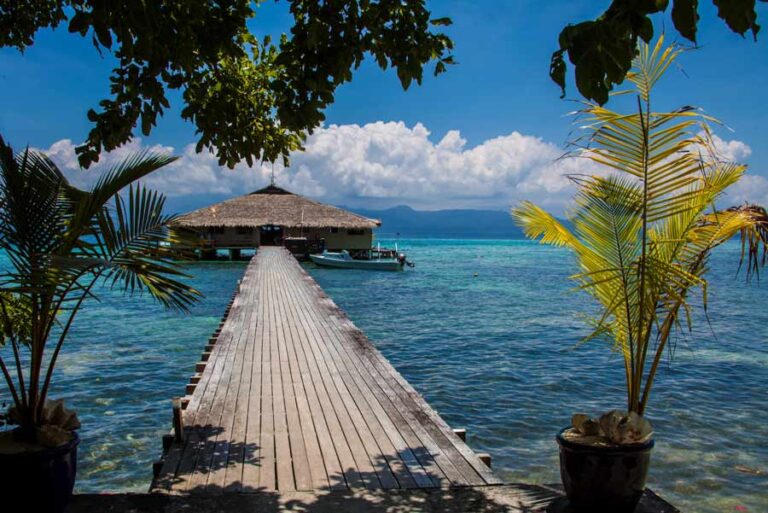
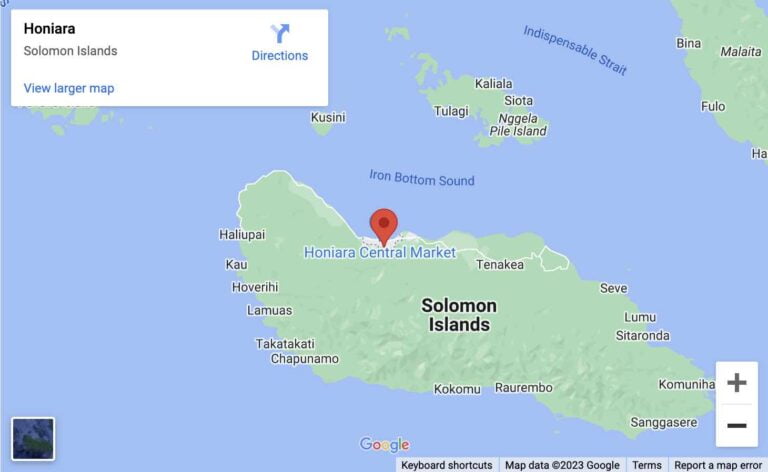
Honiara, the capital city, offered a unique blend of history and contemporary life. My mornings began with aromatic Solomon Islands coffee at the charming Lime Lounge Cafe. I explored the bustling Central Market, where friendly locals introduced me to exotic fruits and handmade crafts. As the day waned, I attended a mesmerizing cultural performance, where traditional dances and songs transported me to the heart of Melanesia.
The night ended with a sumptuous seafood dinner at the Point Cruz Yacht Club, watching fishing boats bob in the moonlit harbor.
3. Gizo – Island Adventure and Starlit Nights
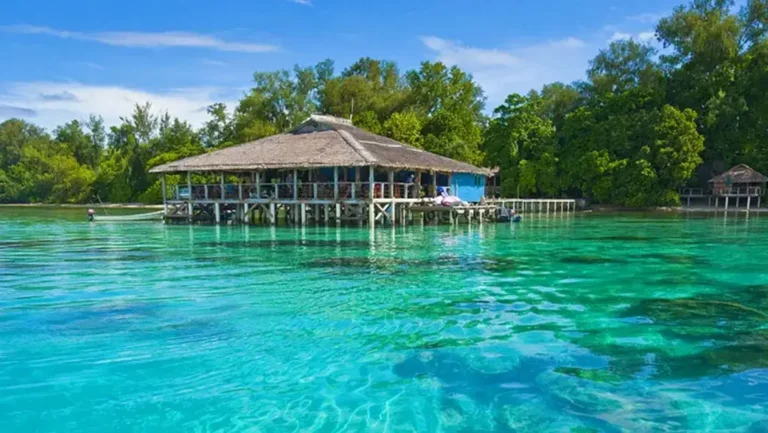
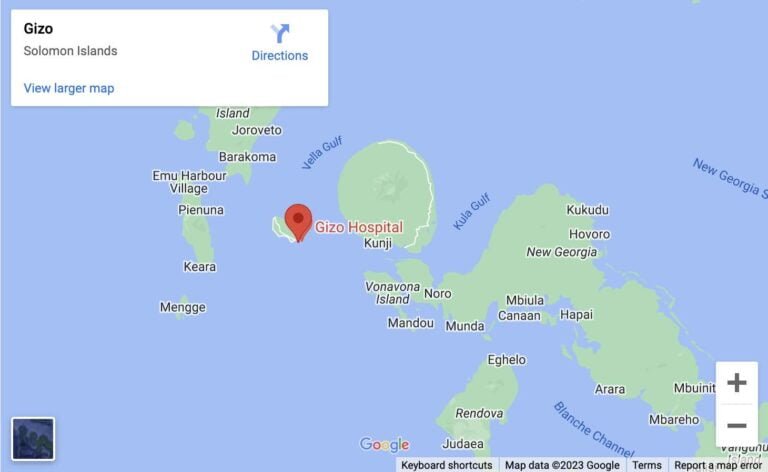
Gizo, in the Western Province, was an adventurer’s paradise. Waking up to a view of turquoise waters from my overwater bungalow was a surreal experience. I embarked on a thrilling day of diving among WWII wrecks and exploring untouched coral reefs. For breakfast, I devoured fresh papaya and coconut bread at Peter Joseph’s Café.
As the sun set, I enjoyed a tranquil sundowner cruise, basking in the sight of dolphins dancing in the twilight.
4. Malaita – A Journey into Ancient Traditions
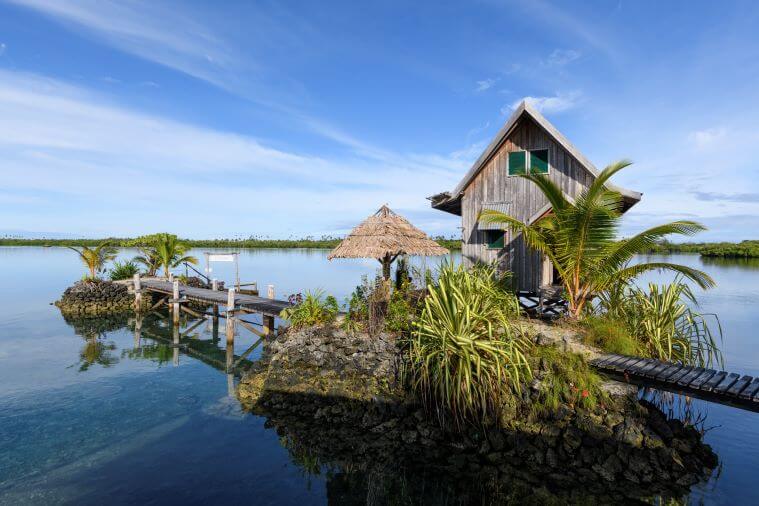

Malaita was a cultural immersion like no other. In the village of Suavanao, I participated in the mesmerizing Lole dance, an ancient ceremony celebrating life and traditions. Breakfast consisted of delicious taro and cassava dishes prepared by my gracious hosts.
As the stars painted the night sky, I gathered around a bonfire with locals, listening to ancient legends and stories that have been passed down through generations.
5. Rennell Island – A UNESCO-Listed Natural Wonder
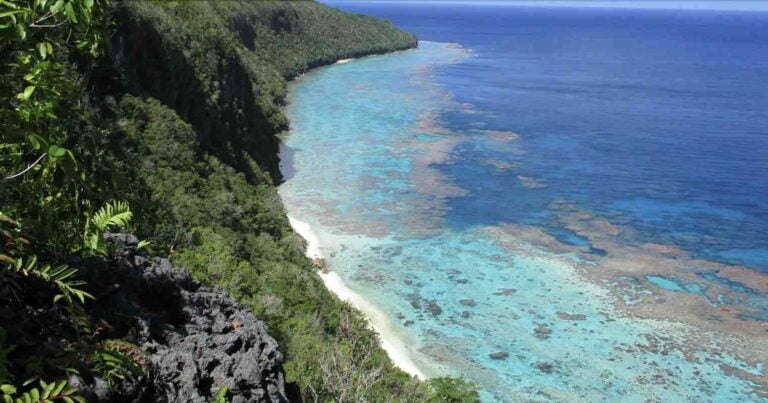
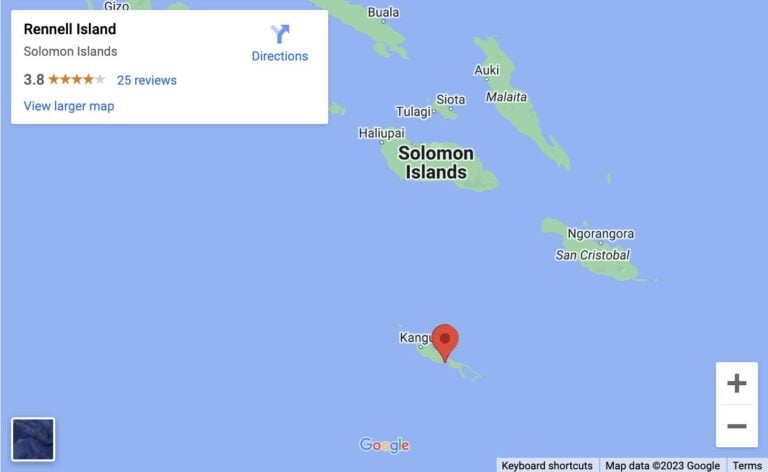
My final destination was Rennell Island, home to the world’s largest raised coral atoll and a UNESCO World Heritage Site. The morning began with a hike through lush rainforests to Lake Tegano, a serene natural wonder hidden within the island’s interior. Breakfast by the lake was a simple yet delicious affair of fresh fruit and coconut milk.
As the day unfolded, I kayaked across the tranquil lake, surrounded by the calls of exotic birds. Sundown was a magical moment, with the lake’s still waters reflecting the fiery hues of the sky.
Did we mention the food? EAT!
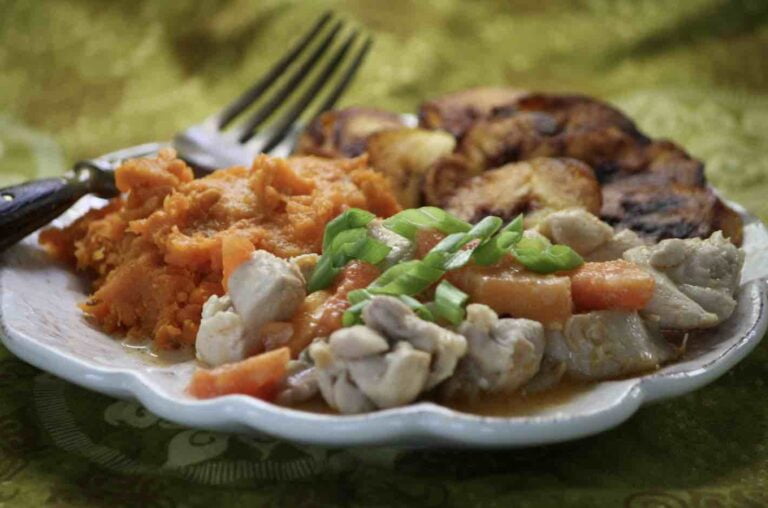
Solomon Islands cuisine is a delightful blend of tropical flavors and traditional Pacific island fare. One cannot truly experience the Solomon Islands without savoring its unique culinary offerings. Fresh seafood takes center stage, with dishes like grilled mahi-mahi, coconut-crusted prawns, and smoked fish often gracing the tables of local eateries.
The use of coconut milk is prevalent, enhancing the taste of dishes like fish curry and the beloved “island cabbage,” a delicious coconut-infused greens dish. Sago, a starchy staple derived from palm trees, is another local favorite, often served alongside grilled meats or as a base for desserts. And no meal is complete without a refreshing sip of fresh coconut water, which serves as both a thirst quencher and a symbol of hospitality in these tropical isles.
Whether dining at a local market stall or savoring a seafood feast by the beach, the flavors of the Solomon Islands provide a true taste of the Pacific paradise.
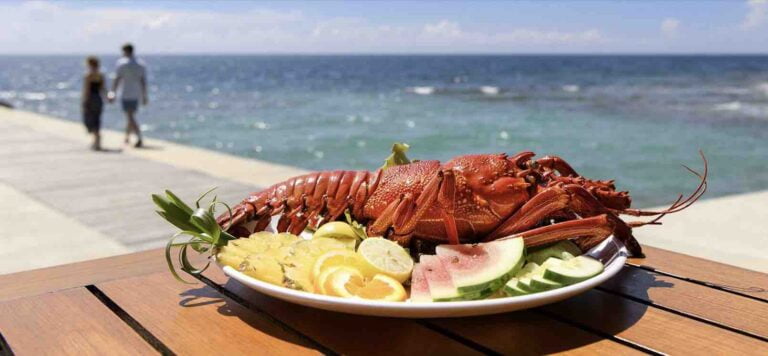
Essential Things to Know Before Traveling to Solomon Islands
Traveling to the Solomon Islands, a stunning but remote archipelago in the South Pacific, requires some preparation and awareness of the destination’s unique characteristics. Here are some essential things to know before traveling to the Solomon Islands:
1. Visa and Entry Requirements:
- Check whether you require a visa to enter the Solomon Islands based on your nationality and the purpose and duration of your visit. Visa requirements can vary, so ensure that you have the necessary documents before departure.
2. Currency:
- The currency used in the Solomon Islands is the Solomon Islands Dollar (SBD). Credit cards are not widely accepted, so it’s advisable to carry cash, especially when visiting remote areas.
3. Health Precautions:
- It’s recommended to consult a travel health professional before visiting the Solomon Islands. Ensure that your vaccinations are up-to-date, and consider taking prophylactic medication for malaria, as the country is in a malaria-prone region.
4. Local Customs and Culture:
- The Solomon Islands have a rich and diverse culture with many different languages and traditions. Respect local customs, dress modestly, and seek permission before taking photos of people.
5. Language:
- English is the official language, and you’ll find many people who speak it, especially in urban areas and tourist spots. However, learning a few basic phrases in local languages such as Pijin or Bislama can be appreciated by locals.
6. Safety:
- The Solomon Islands are generally considered safe for travelers, but like any destination, it’s essential to take standard safety precautions. Keep an eye on your belongings, avoid walking alone at night in unfamiliar areas, and stay informed about local conditions.
7. Transport:
- Public transportation can be limited in some areas, especially on smaller islands. Arrange transportation in advance if needed, and be prepared for some journeys to be slower than you might be accustomed to.
8. Accommodation:
- Accommodation options vary from basic guesthouses to upscale resorts, particularly on the main islands. In remote areas, accommodations may be more rustic, so research your options and book in advance, especially during peak travel seasons.
9. Electricity:
- The Solomon Islands typically use Type I electrical outlets (the same as in Australia and New Zealand), with a voltage of 230V and a frequency of 50Hz. Bring the necessary adapters if your devices have different plug types.
10. Food and Water:
– The local cuisine features fresh seafood, coconut, and tropical fruits. While dining, exercise caution with street food to prevent foodborne illnesses. It’s advisable to drink bottled or purified water, especially outside of urban areas.
11. Natural Hazards:
– The Solomon Islands are in a seismically active region and are susceptible to earthquakes and tsunamis. Be aware of emergency procedures and stay informed about local conditions.
12. Travel Insurance:
– It’s essential to have comprehensive travel insurance that covers medical emergencies, trip cancellations, and personal belongings to ensure you’re prepared for unexpected situations.
13. Weather and Climate:
– The Solomon Islands have a tropical climate with high humidity. Be prepared for warm and humid conditions year-round, with a wet season from November to April and a drier season from May to October.
14. Respect for the Environment:
– The Solomon Islands are home to stunning natural beauty, including coral reefs. When snorkeling or diving, follow responsible tourism practices to protect the delicate marine ecosystems.
By keeping these essential factors in mind and conducting thorough research before your trip, you can have a safe and enjoyable experience exploring the Solomon Islands’ unique and breathtaking landscapes.
How to Get to Solomon Islands
Getting to the Solomon Islands can be an adventure in itself due to its remote location in the South Pacific. Here are the primary ways to reach the Solomon Islands:
1. By Air:
- Honiara International Airport (HIR): This is the main international gateway to the Solomon Islands, located on Guadalcanal Island. Several airlines operate flights to and from Honiara, including Solomon Airlines, Fiji Airways, Air Vanuatu, and Virgin Australia. These flights often connect via major regional hubs like Nadi (Fiji) or Brisbane (Australia).
2. Visa Requirements:
- Check whether you need a visa to enter the Solomon Islands based on your nationality and the purpose and duration of your visit. Visa requirements can vary, so make sure to obtain the necessary visa in advance if required.
3. Connecting Flights:
- Depending on your location, you may need to take connecting flights to reach one of the regional hubs before flying to the Solomon Islands. Popular departure points include Brisbane, Sydney, Auckland, Nadi, and Port Vila.
4. Domestic Flights:
- Once you arrive in Honiara, domestic flights operated by Solomon Airlines and other carriers can take you to other islands within the archipelago. Gizo, Munda, and Seghe are popular destinations for diving and exploring the Western Province.
5. By Cruise:
- Some cruise lines include the Solomon Islands in their itineraries. Cruises offer a unique way to explore various islands and enjoy the natural beauty of the archipelago.
6. Yacht and Private Boat:
- For those with sailing experience, the Solomon Islands can be accessed by private yacht or boat. Several marinas and ports are available for docking.
7. Travel Considerations:
- Be sure to check the latest travel advisories, entry requirements, and health and safety guidelines before planning your trip to the Solomon Islands. Regulations can change, so stay informed.
8. Accommodation and Activities:
- Plan your accommodations and activities in advance, especially if you’re visiting remote areas or during peak travel seasons. Options range from basic guesthouses to upscale resorts, and some activities may require reservations.
9. Currency and Essentials:
- The currency in the Solomon Islands is the Solomon Islands Dollar (SBD). Credit cards are not widely accepted, so it’s essential to carry cash, especially when traveling to more remote areas.
10. Language and Culture:
– English is the official language, and Pijin is a widely spoken Creole language. Understanding and respecting local customs and traditions is important when interacting with the Solomon Islands’ friendly and diverse communities.
Traveling to the Solomon Islands requires careful planning due to its remote location, but the natural beauty, cultural richness, and unique experiences make it a rewarding destination for adventurous travelers.
How to Get Around Solomon Islands
Getting around the Solomon Islands, an archipelago in the South Pacific, often involves a mix of transportation methods due to its island geography. Here’s how to get around:
1. Domestic Flights:
- Domestic flights operated by Solomon Airlines connect the major islands. Honiara serves as the primary hub for domestic flights, and you can fly to destinations like Gizo, Munda, Seghe, and more. Flights are essential for covering long distances quickly.
2. Water Transportation:
- Ferries and Boats: Inter-island ferries and boats are common modes of transportation, especially for traveling between islands in close proximity. Reliable services connect many inhabited islands. Be sure to check schedules and availability in advance, as they may not run daily.
- Charter Boats: For more flexibility, you can also charter boats for private transport or tours, which can be particularly useful for exploring remote or less-accessible islands.
3. Canoes and Outboard Motorboats:
- On some islands, traditional canoes and small outboard motorboats are still used for local transportation. These are excellent options for shorter trips within an island or around a lagoon.
4. Road Transportation:
- On the larger islands like Guadalcanal, Malaita, and Isabel, you’ll find roads and buses for ground transportation. Local buses and minibusses are available, but schedules may be irregular. Taxis are also an option in urban areas like Honiara.
5. Walking and Hiking:
- In towns and cities and even on some smaller islands, walking is a convenient way to get around. Many local attractions, markets, and accommodations are within walking distance.
6. Rental Vehicles:
- Some islands, particularly Guadalcanal, offer car and scooter rentals. Keep in mind that road conditions may vary, and driving standards can be different from what you’re used to.
7. Organized Tours:
- For activities like hiking, diving, and snorkeling, consider booking organized tours. Local operators can provide transportation to and from the activity sites, making it convenient for travelers.
8. Travel Considerations:
- Keep in mind that transportation schedules may be influenced by factors such as weather and local events. Be flexible with your plans, and allow extra time for potential delays.
- If you’re traveling to remote or less-touristed areas, it’s advisable to communicate with locals, tour operators, or guesthouses in advance to arrange transportation and accommodations.
Navigating the Solomon Islands may require some patience and flexibility, but the beauty of the islands and the warmth of the local communities make the journey well worth it. Always check with local sources for the most up-to-date information on transportation options and schedules.
FAQ – Our Top 5 Best Places to Visit in Solomon Islands and Traveling to Solomon Islands in General
Traveling to Solomon Islands: Frequently Asked Questions
1. Do I Need a Visa to Visit the Solomon Islands?
- Visa requirements vary depending on your nationality, purpose of visit, and duration of stay. It’s essential to check the specific visa requirements for your nationality with the nearest Solomon Islands embassy or consulate.
2. What Currency is Used in the Solomon Islands?
- The currency in the Solomon Islands is the Solomon Islands Dollar (SBD). While major credit cards are accepted in some urban areas, it’s advisable to carry cash, especially when traveling to more remote regions where cash is the primary form of payment.
3. Is English Spoken in the Solomon Islands?
- Yes, English is the official language and is widely spoken in urban areas and tourist destinations. However, locals may also speak indigenous languages like Pijin. Learning a few basic Pijin phrases can be helpful and appreciated.
4. When is the Best Time to Visit the Solomon Islands?
- The best time to visit is during the dry season, which typically runs from May to October. This period offers pleasant weather with less rainfall. However, marine activities like diving and snorkeling can be enjoyed year-round.
5. Are There Health Precautions I Should Take Before Traveling to the Solomon Islands?
- Travelers are advised to consult a travel health professional for vaccinations and health precautions, including malaria prophylaxis, as the Solomon Islands is in a malaria-prone region. It’s also crucial to have travel insurance that covers medical emergencies.
6. How Do I Get Around the Solomon Islands?
- Getting around involves a mix of domestic flights, ferries, boats, canoes, walking, and, in some areas, rental vehicles. Domestic flights connect major islands, while boats and ferries are common for inter-island travel.
7. Is It Safe to Travel to the Solomon Islands?
- The Solomon Islands are generally considered safe for travelers. As with any destination, it’s essential to take standard safety precautions, such as securing your belongings and being aware of your surroundings.
8. What Are the Must-Visit Places in the Solomon Islands?
- Must-visit places include Honiara (the capital), Marovo Lagoon, Gizo, Malaita, and Rennell Island. Each offers a unique blend of natural beauty, culture, and adventure.
9. Can I Drink Tap Water in the Solomon Islands?
- It’s advisable to drink bottled or purified water, especially outside urban areas, to avoid potential health issues. Some accommodations may provide filtered water.
10. Are There Any Health Restrictions in Place?
– Travel restrictions can change frequently. Before traveling to the Solomon Islands, check the latest travel advisories, entry requirements, and health and safety guidelines from official sources.
11. What Should I Know About Local Customs and Culture?
– Respect local customs, dress modestly, and ask for permission before taking photos of people. Learning about and engaging with the local culture can enhance your travel experience.
12. Can I Use My Electrical Devices in the Solomon Islands?
– The Solomon Islands typically use Type I electrical outlets, with a voltage of 230V and a frequency of 50Hz. Bring the necessary adapters if your devices have different plug types.
Traveling to the Solomon Islands is a rewarding experience, but it’s essential to plan ahead, stay informed, and respect local customs to ensure a smooth and enjoyable journey in this remote South Pacific paradise.
Best Places to Visit in Solomon Islands: Frequently Asked Questions
Frequently Asked Questions (FAQ) About Places to Visit in the Solomon Islands
1. What are the top attractions in the Solomon Islands?
- Some of the top attractions in the Solomon Islands include Marovo Lagoon, Honiara, Gizo, Malaita, Rennell Island, and various WWII historical sites.
2. Are there any must-visit cultural experiences in the Solomon Islands?
- Absolutely! You can immerse yourself in local culture by attending traditional dances, visiting local markets, and participating in ceremonies and events in different villages. Don’t miss the opportunity to try local dishes and learn about indigenous customs.
3. What is there to do for outdoor enthusiasts in the Solomon Islands?
- The Solomon Islands offer a paradise for outdoor enthusiasts. Activities include diving and snorkeling in pristine coral reefs, hiking through lush rainforests, exploring WWII wreck sites, and enjoying water sports like kayaking and paddleboarding.
4. What are some hidden gems or lesser-known places to visit in the Solomon Islands?
- Look out for hidden gems like Rennell Island’s Lake Tegano, the Ontong Java Atoll for sea turtle watching, and lesser-known islands in the Temotu Province for unspoiled natural beauty and unique cultural experiences.
5. Are there any cultural festivals or events worth attending in the Solomon Islands?
- Yes, the Solomon Islands host various cultural festivals and events throughout the year. These include the Solomon Islands Arts Festival, the Shell Money Festival, and traditional celebrations in various villages. Check the local calendar for events during your visit.
6. What are the best islands for diving and snorkeling in the Solomon Islands?
- The Western Province, including Gizo and Munda, is renowned for its diving and snorkeling opportunities. Marovo Lagoon and the Florida Islands are also popular spots. Each offers a diverse underwater world with colorful coral reefs and marine life.
7. How can I explore the WWII history of the Solomon Islands?
- Visit WWII historical sites like the Vilu War Museum, Bloody Ridge, and Bonegi I and II in Guadalcanal. These sites provide insights into the significant battles that took place in the region.
8. Are there unique accommodations options in the Solomon Islands?
- Yes, you can find a variety of accommodations ranging from basic guesthouses and eco-resorts to overwater bungalows and beachfront lodges. Staying in traditional homestays with local families can provide an authentic experience.
9. What should I know about safety when visiting the Solomon Islands?
- The Solomon Islands are generally safe for travelers, but standard safety precautions apply. Secure your belongings, be aware of your surroundings, and follow local advice and guidelines.
10. How do I get to the remote islands in the Solomon Islands?
– Getting to remote islands often involves domestic flights and boat transfers. It’s recommended to coordinate transportation in advance, especially if you plan to explore less-accessible areas.
11. Are there any special considerations for visiting the Solomon Islands during specific seasons?
– Plan your visit based on your interests. The dry season from May to October is ideal for most outdoor activities, while the wet season from November to April offers lush landscapes and is a great time for birdwatching.
12. What is the best way to interact with the local communities and learn about their culture?
– Engage with locals, ask questions, and participate in their daily activities or events. Learning a few basic phrases in Pijin, the local Creole language, can also facilitate communication and show respect for the culture.
Visiting the Solomon Islands is a unique and enriching experience. By exploring these frequently asked questions and planning ahead, you can make the most of your journey in this South Pacific paradise.
You want more on Places to visit in Solomon Islands? ⬇️ ⬇️ ⬇️
Our Top 5 Best Places to Visit in Solomon Islands – Final Thoughts
The Solomon Islands are a true treasure trove of experiences waiting to be uncovered. From the underwater paradises of Marovo Lagoon to the rich cultural traditions of Malaita, this South Pacific gem offers a diverse range of adventures. It’s a place where time seems to stand still, where modernity coexists with ancient customs, and where every moment feels like a discovery of paradise.
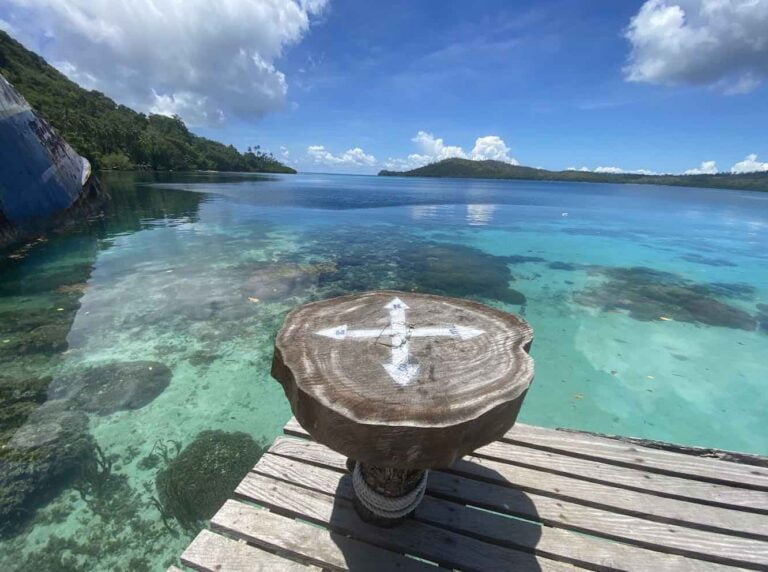
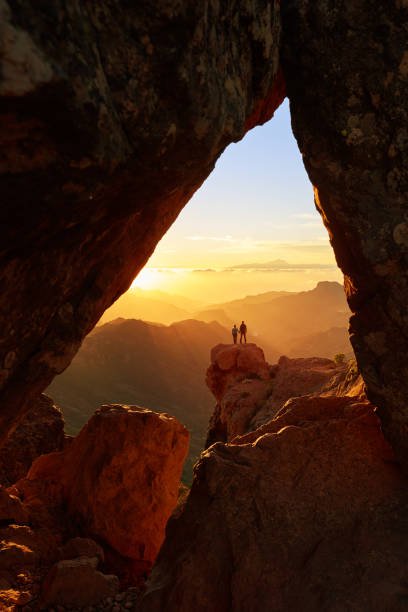
Best Places to Visit in Spain 2023
Spain, a country rich in history, culture, and breathtaking landscapes, beckons travelers with its vibrant cities, stunning beaches, and captivating architecture. From the enchanting streets of Barcelona to the sun-kissed shores of the Costa del Sol, Spain offers a diverse array of destinations to explore..

Europe: A Tapestry of Diversity, Culture and Adventure
Europe, a continent as diverse as it is beautiful, is a traveler’s dream come true. From the snow-capped peaks of the Alps to the sun-kissed beaches of the Mediterranean, Europe offers an enchanting mix of experiences for every type of traveler. Join us as we embark on a journey through the heart of Europe, discovering…

Our Top 5 Best Places to Visit in Kuwait
Discovering Kuwait: Journey Through its Hidden Treasures Hey fellow wanderlusters, let’s dive into Kuwait’s kaleidoscope of culture, where the past meets modernity. I’ve uncovered five must-visit spots for the young and adventurous traveler. From sipping on sweet tea under Bedouin tents to catching epic sunsets, Kuwait is an adventure waiting to happen. Map of Kuwait…

Our Top 5 Best Places to Visit in Dominica
Dominica: Where Adventure Meets Paradise Welcome to Dominica, the “Nature Island” of the Caribbean. If you’re seeking a destination that’s off the beaten path, brimming with natural wonders and adventure, you’ve found it. Here, you’ll explore lush rainforests, soak in rejuvenating hot springs, and dive into sparkling turquoise waters. Let’s embark on a journey to…
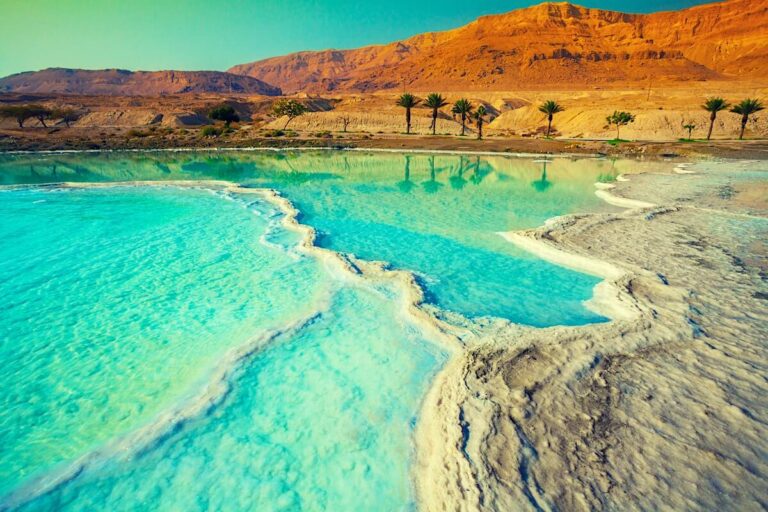
Our Top 5 Best Places to Visit in Jordan
My Journey Through Jordan’s Top 5 Destinations If you’re ready to dive into a world of ancient wonders, surreal landscapes, and incredible experiences, then Jordan is calling your name. Let me take you on a ride through my unforgettable journey as I uncovered the 5 best places to visit in this captivating country. Map of…

Our Top 5 Best Places to Visit in Lebanon
Lebanon Unveiled: Exploring the Mystique of the Middle East Welcome to the captivating land of Lebanon! Nestled along the Mediterranean Sea, this enchanting country is a treasure trove of history, culture, and natural beauty. Let’s embark on a journey to discover some of the most mesmerizing places that Lebanon has to offer. Map of Lebanon…
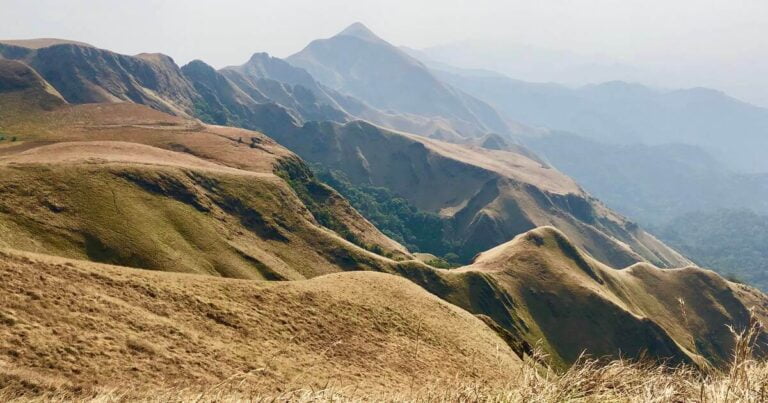
Our Top 5 Best Places to Visit in Guinea
Unveiling Guinea’s Hidden Treasures: 5 Must-Visit Places Are you ready for an off-the-beaten-path adventure in West Africa? Guinea, a hidden gem nestled between Guinea-Bissau, Senegal, Mali, Cote d’Ivoire, Liberia, and Sierra Leone, awaits your discovery. Prepare to be captivated by its vibrant culture, stunning landscapes, and welcoming people as we explore some of the must-visit…
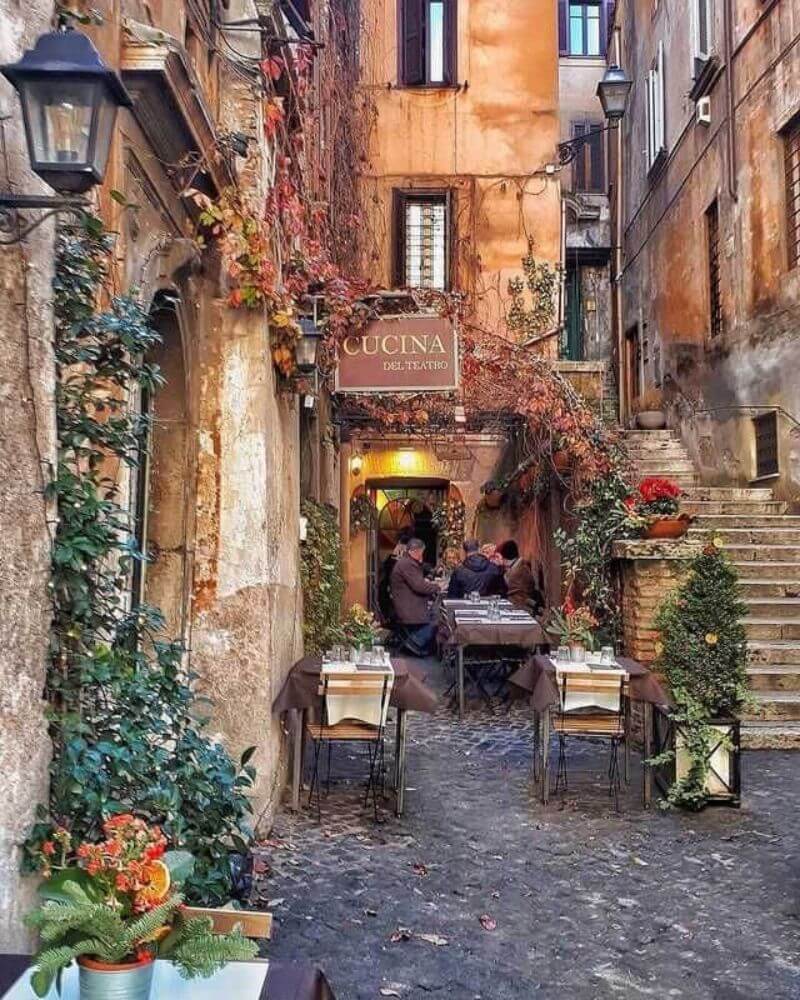
Best Places to Visit in Italy 2023
Italy, a land of romance, rich history, and breathtaking landscapes, beckons travelers with its magnetic allure. From the captivating cities adorned with timeless architecture to the picturesque coastal towns and rolling vineyards, this Mediterranean gem offers a plethora of unforgettable experiences..
Exploring Greece’s Timeless Treasures: Greece Best Places to Visit Top 10
Exploring Italy’s Treasures: The Best Places to Visit in Italy in 2023
Our 10 Best Places to Visit in Venice: Come Explore the Enchanting Floating City
Unveiling the Enchanting Beauty: Our Best Places to Visit in Florence
Our Best Free Places to Visit in New York That are yes, Absolutely FREE!
Our Best 10 Affordable Vacation Destinations if you are on a tight budget.
Our 10 Best Budget Travel Tips: Explore the World Without Draining Your Bank Account.
These are our Top 10 Best Travel Destinations Worldwide 2023
Our Absolute Best list of 10 Less Touristy Places to Travel in Europe 2023
Australia: A Traveler’s Paradise: Best Australian Destinations 2023
Our Top 5 Best Places to Visit in Solomon Islands – By David John
5 Best Places to Visit in Solomon Islands Cover Image Courtesy vt
Best Places to Visit in Solomon Islands flickr images licensed under CC BY 2.0
Additional images adobe · colourbox · istock · pexels · shutterstock · unsplash unless otherwise stated.
Were our Top 5 Best Places to Visit in Solomon Islands helpful to you?
Let us know your thoughts in the comments below..
And if you are looking for a specific piece of information, please do comment below..
